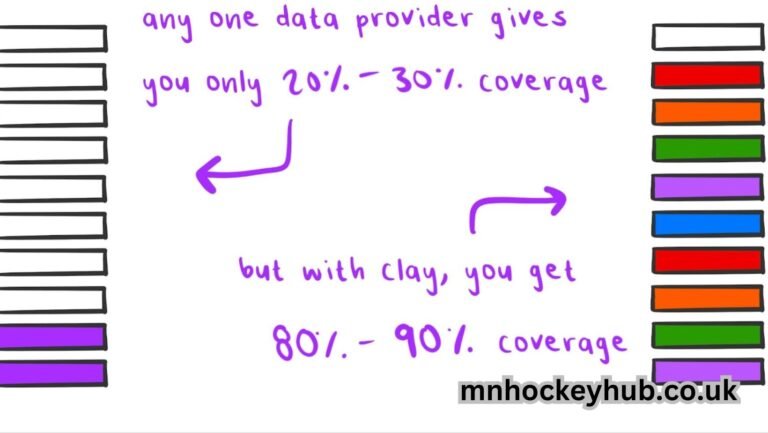Clay is the orchestration platform for modern go-to-market teams. Modern go-to-market (GTM) teams need tools that enable them to successfully coordinate and carry out their objective to be successful in today’s fast-paced business climate. Clay is a platform for orchestration that was develope expressly to fulfill the requirements of these teams. It offers a centralized system that streamlines operations, improves cooperation, and boosts results. Since Clay integrates data, automation, and analytics, it enables GTM teams to concentrate on driving growth while simultaneously reducing the amount of manual work they have to do. The purpose of this article is to explore the different characteristics of Clay, as well as its advantages for go-to-market teams and how it has the potential to revolutionize modern marketing, sales, and customer success operations.
Key Takeaways from the Article:
- Introduction to Clay: A detailed overview of Clay as the orchestration platform designed for modern go-to-market (GTM) teams.
- Key Features of Clay: Explore how Clay integrates data, automation, and analytics to streamline GTM efforts.
- Benefits for Go-to-Market Teams: How Clay enhances collaboration, optimizes processes, and improves ROI.
- Use Cases and Success Stories: Real-world examples of businesses benefiting from Clay.
- FAQs: Common questions about Clay’s capabilities and its impact on GTM teams.
What exactly is clay? This article provides a comprehensive overview of the orchestration platform.
Clay is the orchestration platform for modern go-to-market teams. Is an orchestration platform that gives go-to-market (GTM) teams more power by automating, simplifying, and optimizing the processes that they use. Clay was designe with modern teams in mind, and its primary focus is on integrating the operations of sales, marketing, and customer success. It offers a central location for communication, data management, and operational efficiency.
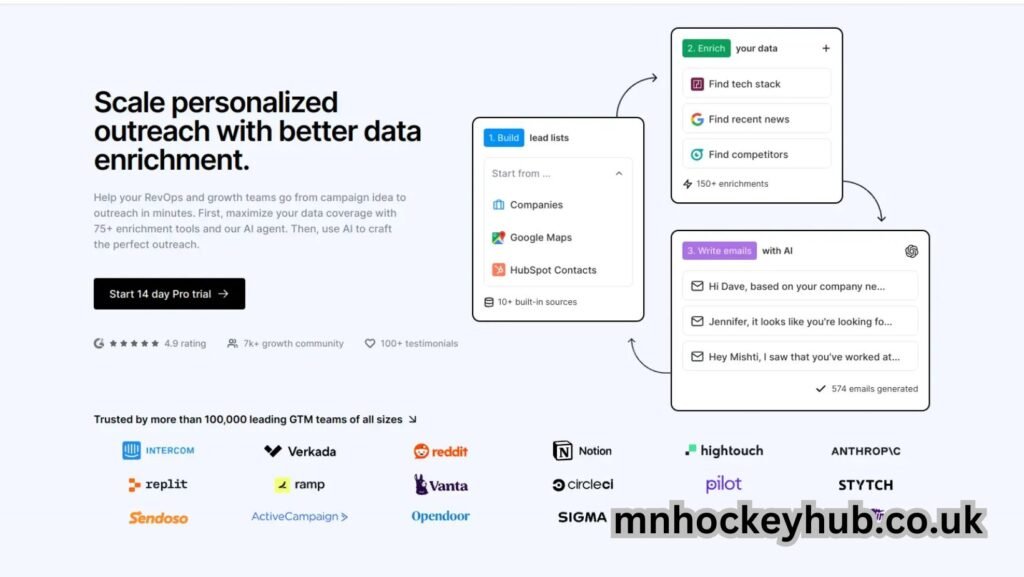
Main Characteristics of Clay:
- Clay is the orchestration platform for modern go-to-market teams. is responsible for integrating data from a variety of sources, including customer relationship management (CRM) systems, marketing automation platforms, and customer databases. This allows Clay to provide teams with a uniform view of client information.
- Automation the platform is able to automate repetitive processes, such as sending follow-up emails and updating CRM data, which frees up significant time for GTM staff.
- Real-Time Analytics Clay’s built-in analytics provide actionable information, assisting teams in determining the efficacy of their GTM initiatives and developing ways to improve them on the fly.
- Tools for communication Clay encourages smooth communication among sales, marketing, and customer success teams, so ensuring that all departments are aligned throughout the organization.
Also Learn More: clay is the orchestration platform for modern go-to-market teams.
The Core Capabilities of Clay:
| Feature | Description |
|---|---|
| Data Integration | Unified view of customer data across platforms |
| Automation | Automates tasks like follow-ups, CRM updates, and data entry |
| Real-Time Analytics | Provides insights into campaign performance, customer behavior, and sales metrics |
| Collaboration Hub | Ensures all GTM teams can collaborate effectively, aligning goals and strategies |
Why Clay Is Necessary for Go-To-Market Teams: Addressing the Most Important Challenges
When it comes to modern corporate environments, go-to-market teams are confronted with a variety of obstacles. It is possible to feel overwhelmed when attempting to manage complex customer journeys, ensure that messaging is consistent across channels, and navigate the ever-increasing amount of marketing and sales tools.
Clay can solve the following key challenges:
- Siloed data: Traditional GTM teams frequently suffer from disconnected data systems, which can potentially lead to inefficiencies. Data is consolidate onto a single platform using Clay, which helps to reduce silos.
- Manual tasks that consume: A substantial amount of time Sales and marketing teams can spend a significant amount of time participating in administrative tasks like as data entry and sending follow-up emails. Clay is able to automate these operations, which enables teams to concentrate on activities that are of high value.
- A Discordant Relationship Between Departments: Marketing, sales, and customer success teams can become misaligned if they do not have access to a centralized orchestration solution. Clay is a facilitator of teamwork and helps to guarantee that everyone is working towards equivalent objectives.
Statistics on the Obstacles Facing the Go-To-Market Process
| Challenge | Impact on Teams | How Clay Helps |
|---|---|---|
| Siloed Data | 45% of teams struggle with fragmented data | Unified data management improves decision-making |
| Manual Task Management | 30% of work hours spent on manual tasks | Automates repetitive tasks, boosting productivity |
| Departmental Misalignment | 60% of teams report poor alignment between teams | Clay ensures all teams work from a single source of truth |
The Way Clay Revolutionises the Go-To-Market Procedure
The process of going to clay is the orchestration platform for modern go-to-market teams. is a complicated one that involves several different touchpoints and stakeholders. To handle this complexity, Clay’s orchestration platform provides solutions that cover the entire process. Clay assists modern teams in efficiently planning, executing, and optimizing their go-to-market strategies. This assistance ranges from lead generation to customer success.
Also, Read More: clay is the orchestration platform for modern go-to-market teams.
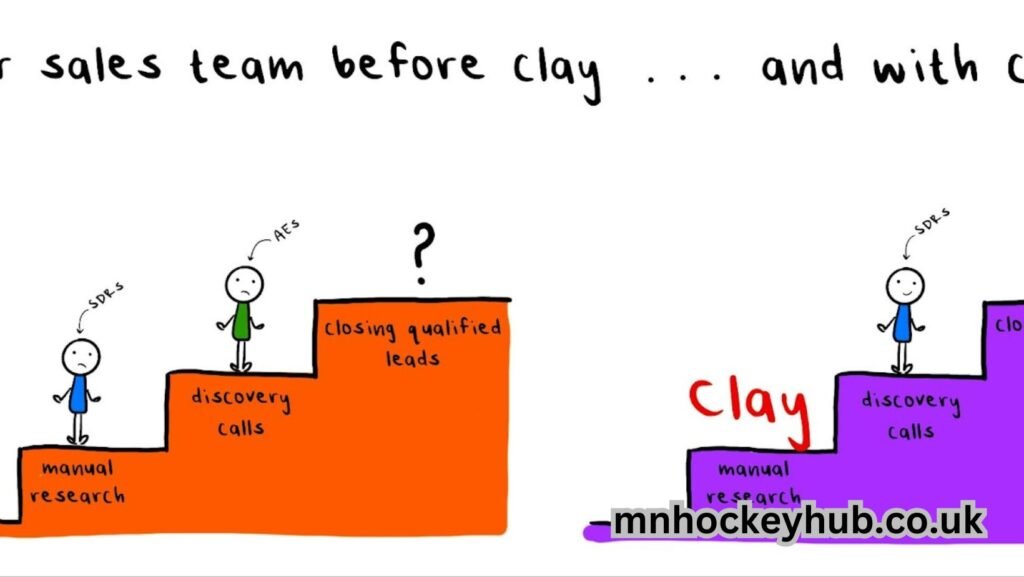
The Transformation of Sales, Marketing, and the Success of Customers for
- Clay’s ability to automate lead nurturing, qualification, and handover processes enables sales teams to concentrate on closing deals, which is achieved through sales enablement.
- Technology that interfaces with marketing platforms in order to automate marketing campaigns, and monitor performance. Giving data that assists in optimizing marketing efforts is referred to as marketing automation.
- Clay provides assistance to customer success teams in the management of post-sale interaction. Thereby ensuring that clients have a seamless experience throughout their journey.
Improvements Made to Success Metrics by Clay
| Area of Focus | Improvement Metric | Average Increase |
|---|---|---|
| Lead Nurturing Automation | Faster qualification of leads | +30% efficiency |
| Marketing Campaign Success | Higher campaign engagement and ROI | +25% ROI |
| Customer Retention | Improved retention through better follow-up | +20% retention rates |
The Advantages of Clay for Contemporary Teams That Are Going to Market
Clay provides go-to-market teams with several benefits, including increases in productivity and improvements in collaboration, among other advantages. The platform is meant to be adaptable, which enables teams to modify. Its use per the specific requirements and procedures of their operations.
Principal Advantages of Clay
- Improvements in Productivity: Clay enables teams to work more efficiently by automating procedures that require a significant amount of time and presenting data in real-time. This results in a reduction in the amount of time spent on manual processes.
- Enhanced Cooperation Through: Clay enhances communication and promotes alignment between departments, which ultimately results in a more integrated strategy. This is made possible by the fact that all GTM teams operate jointly within the same platform.
- Perspectives That Can Be Put Into Action: The real-time analytics provided by the platform give teams the information they require to make well-informed decisions, which in turn improves the overall efficiency of their go-to-market strategy.
Data on the Gains in Productivity Accomplished with Clay
| Before Clay | After Clay | Improvement |
|---|---|---|
| 30% time spent on manual tasks | 10% time spent on manual tasks | +20% time savings |
| 50% of leads nurtured manually | 80% of leads nurtured through automation | +30% lead nurturing efficiency |
| Department misalignment issues | Real-time collaboration between teams | Full alignment achieved |
Case Studies: Examples of How Clay Has Enabled Businesses to Achieve Success
Clay has been implemente by several businesses to orchestrate their different go-to-market strategies. Which has resulted in measurable benefits in terms of efficiency, sales, and marketing performance. This collection of case studies illustrates how Clay’s properties have been beneficial to a variety of different sectors.
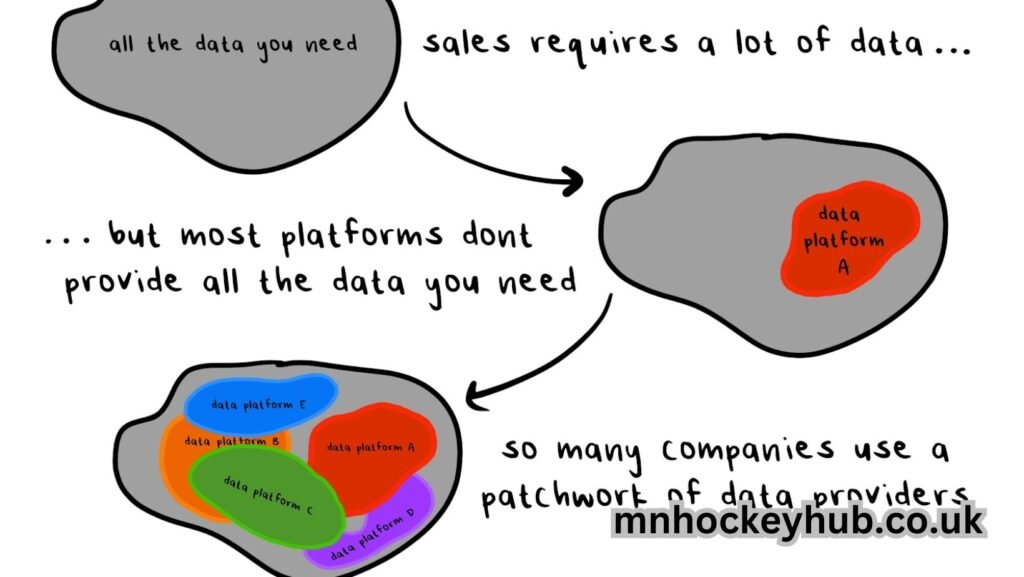
A Software as a Service (SaaS) Company Simplifies Its Marketing and Sales Processes
The sales and marketing departments of a medium-sized software as a service (SaaS) company were having difficulty aligning themselves. The organization was able to achieve a single perspective of client journeys by integrating the data from its customer relationship management (CRM). Marketing automation, and sales technologies through the use of Clay. A 25% boost in sales efficiency and a 15% increase in marketing return on investment were both observe as a consequence of this for the organization.
Also, Read More: clay is the orchestration platform for modern go-to-market teams.
The E-Commerce Business Increases the Number of Leads Generated (Case Study 2)
A company that specializes in e-commerce utilized Clay to automate the processes of lead generation and nurturing. Within a period of six months, the organization was able to achieve a twenty percent improvement. The rate of lead conversion by implementing real-time analytics and automating follow-ups.
Customer Satisfaction in the Financial Services Industry: Case Study No. 3
Clay was adopte by a company that provides financial services to manage its client success activities. A ten percent increase in customer retention was achieve as a result of the platform’s capacity to monitor interactions with customers and to offer insights that may be put into action.
FAQs
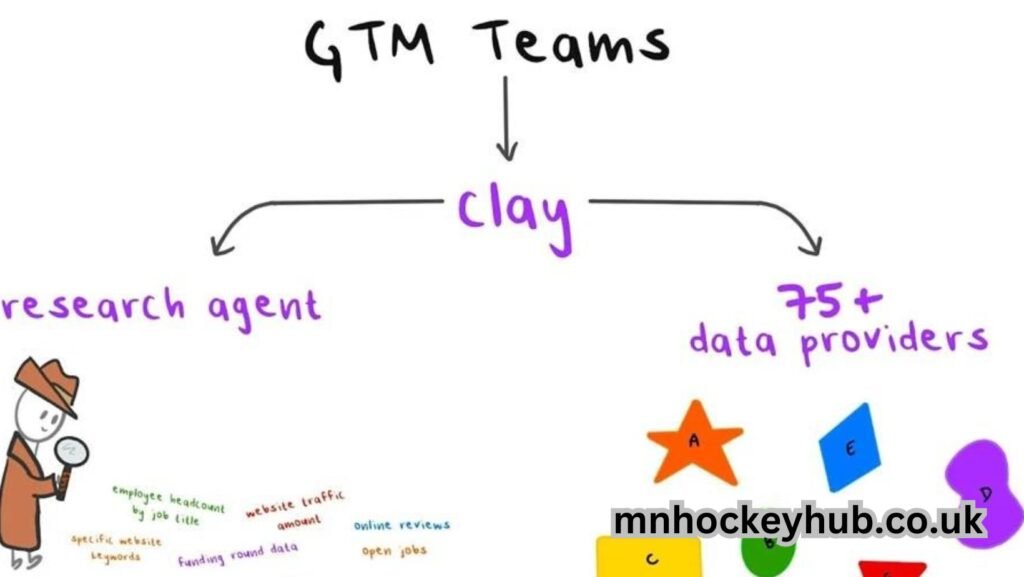
To what extent does Clay aid go-to-market teams, and what exactly is Clay?
Clay, which is an orchestration platform, was develope to simplify the process of going to market by integrating data, automating tasks, and giving real-time insights. The GTM teams improve their efficiency, teamwork, and return on investment as a result of this.
How does Clay manage the integration of data?
As a result of Clay’s ability to connect data from a variety of systems, including customer relationship management (CRM). Marketing automation tools, and customer success platforms, all GTM teams are provided with a single picture.
Is it possible for Clay to automate marketing and sales tasks?
Clay does, in fact, automate routine processes such as lead nurturing. CRM updates, and follow-up emails, which enables teams to concentrate on activities that have a high effect.
In the fourth question, what kind of analytics does Clay offer?
Clay provides real-time analytics that monitor the effectiveness of sales, marketing, and customer success operations. These analytics provide actionable insights that can be use to optimize strategies.
To what extent is Clay appropriate for smaller teams?
Indeed, that is the case. Even though Clay intends to manage intricate GTM processes, its adaptable platform may be modifie to accommodate teams of any size.
Also, Read More: clay is the orchestration platform for modern go-to-market teams.
Conclusion
Clay is a strong orchestration platform that modern go-to-market teams can utilize to improve their overall efficiency. Streamline their processes, and improve their ability to collaborate. Clay enables sales and marketing. Customer success teams concentrate on what matters—namely, driving growth and offering outstanding customer experiences—by integrating data from a variety of sources. Automating operations that require a significant amount of effort, and giving real-time insights. Provides a centralized center where GTM teams can work together, guaranteeing alignment and maximizing their impact. Clay has demonstrated success across a variety of sectors, and it offers this service. Clay offers the tools and insights that are necessary. A company that wants to optimize its go-to-market strategy to maintain. A competitive advantage in a market that is becoming increasingly competitive

